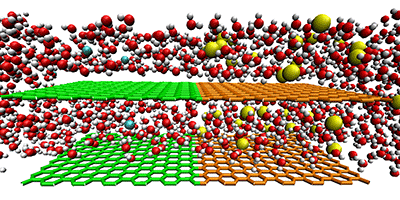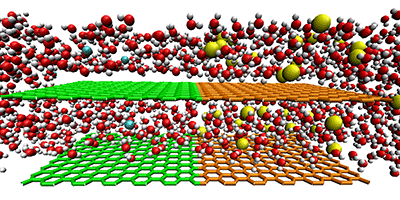Going Against the Flow
In the human body, water molecules are constantly moving in and out of our cells because of differences in salt and ion concentrations, a process known as osmosis. While fundamental to life, osmosis is also important for water desalination and maintaining clean, drinkable water supplies. Osmotic devices normally contain a membrane that blocks salt but allows water to pass. But in traditional membrane devices, the flow direction cannot easily be controlled—water will always flow toward the saltier side. In Physical Review Letters, Clara Picallo at the University of Lyon, France, and colleagues propose a nanoscale device that does away with the traditional membrane and instead uses electrostatic interactions to force water to flow in a preferential direction, similar to how a diode controls the flow of current in a circuit.
The theoretical osmotic device consists of a nanochannel, which acts as a tunnel between two saltwater reservoirs with different salt concentrations, and a voltage source that acts across the channel. In addition, the two halves of the channel are functionalized so that an asymmetric surface charge builds up in the salty solution. The authors show that subtle electro-hydrodynamic couplings occurring on the nanoscale lead to a nonlinear (hence asymmetric) osmotic flow as a function of salt gradient and applied voltage. Furthermore, the applied voltage can induce flow against the natural osmotic gradient. The diode-like dependence of flow on voltage drop implies that the device could be used for reverse osmosis without the need for mechanical parts. More generally, the design could inspire other tunable, nanoscale systems for controlled fluid flow. – Katherine Wright





